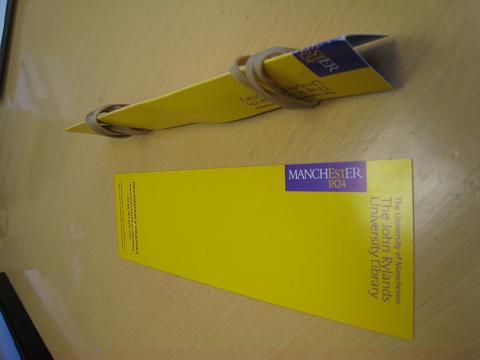Lifting a book using a bookmark
This demonstration shows again how the shapes of cross-sections affect the stiffness of a member.


Fig. 3-6a shows two identical bookmarks which are strips of card with length 210 mm, width 6 mm and approximate thickness 0.4 mm. The lower bookmark in Fig. 3-6a is in its original flat form and the upper one is folded and secured with rubber bands to form the V shape as shown.
If one tries to lift a book using the bookmark in its flat form, the bookmark bends and changes its shape significantly and the book cannot be lifted. This is because the bookmark is very thin and has a small second moment of area around the axis passing through the mid thickness of the bookmark, parallel to its width, resulting in a stiffness which is too small to resist the loading.
It is however easy to lift the book using the bookmark in its folded form as shown in Fig. 3-6b. This is because the folded bookmark has a much larger second moment area since the material is distributed further away from its neutral axis than in the flat form, providing sufficient stiffness to resist the deformation induced by the book. As calculated in Example 3-2, the member with the V shaped section has the stiffness about 5000 times of that of the member of the flat section.
